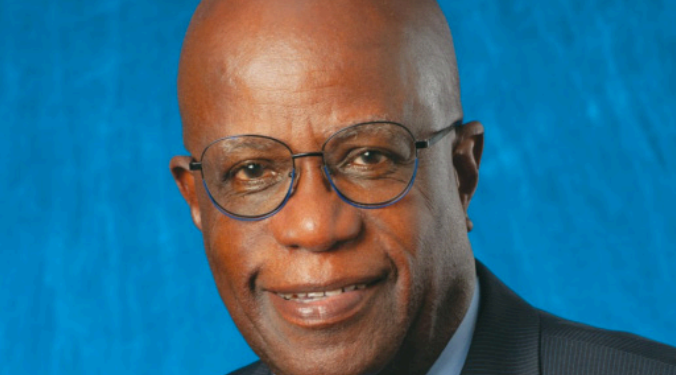My Write by Julian Rogers. mecaribbean@gmail.com
The Caribbean Development Bank (CDB) has laid out an ambitious vision for the region’s future, defined by resilience, innovation, and transformation. At its 2025 Annual News Conference, the bank’s leadership reinforced the urgency of addressing climate change, economic diversification, and private sector engagement while unveiling new financing mechanisms to accelerate development.
At the heart of this year’s event was the theme of “Rebirth: Innovate, Transform, and Thrive,” articulated by CDB President Daniel Best. This guiding principle sets the tone for a more agile and impactful institution that adapts to regional and global realities while remaining steadfast in its core mission of reducing poverty and fostering sustainable growth.
A Caribbean at a Crossroads
The Caribbean faces unprecedented global challenges, from geopolitical tensions threatening trade to climate-induced disasters that put economies at risk. But, as President Best emphasised, this is also a moment of opportunity.
“Our region faces uncertainties that we have never before contemplated. Geopolitical shifts, financial aid withdrawals, and extreme climate events have created new risks. But they also present a moment for renewal—one where the Caribbean must harness its strengths and rethink how development is approached.”
To this end, the CDB has mobilised $460 million in concessional financing through the 11th replenishment of the Special Development Fund (SDF), its largest pool of grant and low-interest loan resources. A significant 35% of these funds will be directed toward climate financing, supporting adaptation projects, disaster response, and sustainability initiatives.
Financing a Climate-Resilient Future
The Caribbean remains one of the most climate-vulnerable regions in the world, with extreme weather events becoming more frequent and intense.
The devastating impact of Hurricane Beryl in 2024 reinforced the need for stronger pre-disaster financing mechanisms and resilience-building investments.
During her presentation, Valerie Isaac, CDB’s Chief of Environmental Sustainability, detailed the bank’s growing emphasis on climate financing, including:
- $101.5 million in climate finance in 2024 (33.5% of CDB’s total financing).
- Expanding access to the Green Climate Fund (GCF), increasing CDB’s project development capacity to $250 million per programme—a fivefold increase.
- The launch of a Climate Change Project Preparation Fund, helping Caribbean countries design bankable adaptation and mitigation projects.
- Greater focus on nature-based solutions, coastal resilience, and early warning systems.
However, funding alone is not enough. The CDB emphasised that climate resilience must be fully integrated into national budgets, infrastructure projects, and private-sector investment strategies.
“We can no longer be surprised when we are impacted by a natural disaster,” said President Best. “Our region is seven times more likely to be affected by extreme weather than larger economies. That means we must plan, build, and finance accordingly.”
The Urgency of Economic Diversification
The Caribbean’s reliance on tourism and commodity exports remains a double-edged sword. While these sectors have rebounded post-pandemic, CDB economists warn that slow growth, inflationary pressures, and external shocks make diversification an urgent priority.
Ian Durant, CDB’s Director of Economics, highlighted the modest regional growth of 1.7% (excluding Guyana) in 2024. Guyana’s booming oil sector masks broader economic vulnerabilities. Durant stressed the need for Caribbean economies to move beyond tourism dependence and build more competitive, high-value industries.
“We need to modernise our logistics infrastructure, reduce trade barriers, and strengthen supply chains across the region. The potential for agri-processing, digital services, and clean energy industries is enormous—but only if we create the right ecosystem for businesses to thrive.”



